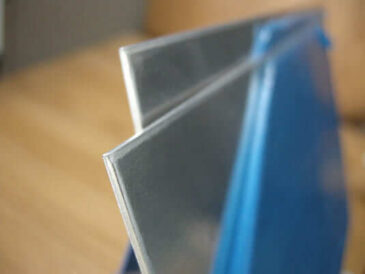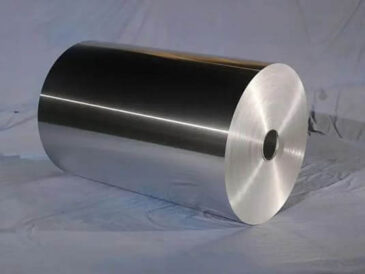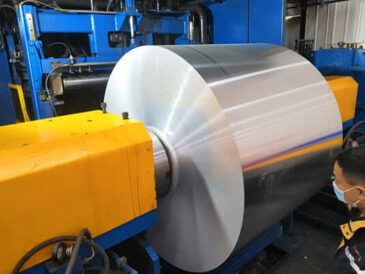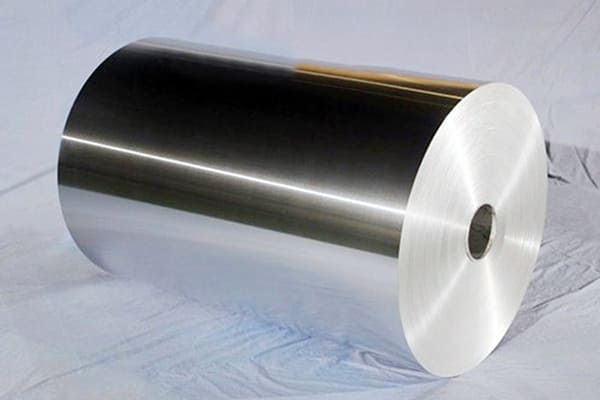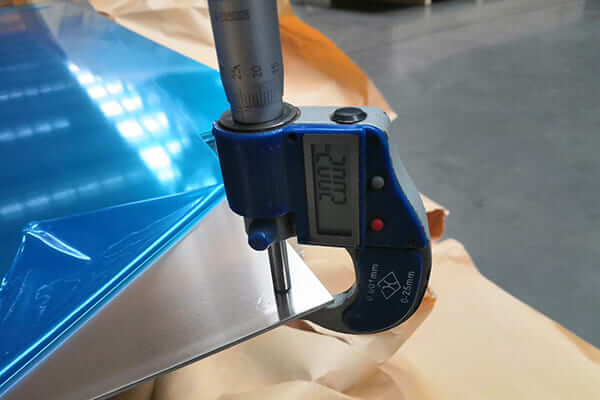Introduction to 6061 aluminum sheet
6061 aluminum sheet is a general-purpose high-strength aluminum sheet. It is a representative product of the 6000 series aluminum alloy (Al-Mg-Si). It can be strengthened by heat treatment. 6061 aluminum alloy is the most widely used heat-treatable aluminum alloy.
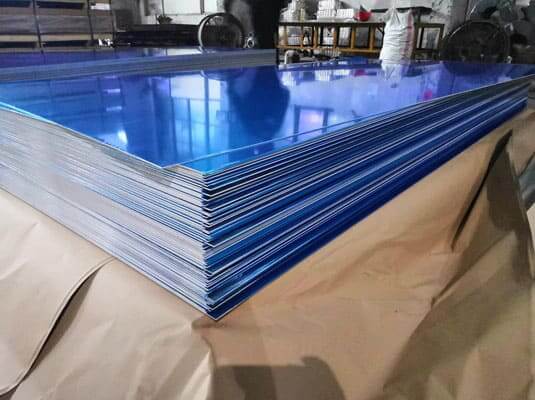
6061 aluminum sheet
6061 aluminum has a high strength-to-weight ratio, above-average corrosion resistance, good machinability, and is well suited to welding, it can be welded using all methods including furnace brazing.
Due to its excellent strength, 6061 aluminum sheet is ideal for applications such as structural frames, base sheets, gussets, aircraft, marine and automotive parts.
Common grades of 6000 series aluminum alloys
- 6061 aluminum alloy
- 6063 aluminum alloy
- 6082 aluminum alloy
6061 aluminum chemical composition
6061 aluminum alloy belongs to the 6000 series al-mg-si alloy. Magnesium is added to improve strength, and silicon added to reduce the melting temperature of the alloy. The following is the chemical composition table of 6061 aluminum alloy:
| Element | Minimum % | Maximum % |
|---|---|---|
| Magnesium | 0.8 | 1.2 |
| Silicon | 0.4 | 0.8 |
| Iron | No Min | 0.7 |
| Copper | 0.15 | 0.4 |
| Manganese | No Min | 0.15 |
| Chromium | 0.04 | 0.35 |
| Zinc | No Min | 0.25 |
| Titanium | No Min | 0.15 |
| Other Elements | No Min | 0.05 each0.15 in total |
Tempers of 6061 aluminum sheet
In the “O” temper or annealed condition, alloy 6061 has good formability.
In the T4 condition, fairly severe forming can be done;
In the T6 condition, properties may be obtained by artificial aging.
What is the meaning of “6061-T6”?
6061 represents the aluminum alloy grade and is a member of the 6000 series aluminum alloy sheet plate (Al-Mg-Si).
T6 stands for tempered condition and is achieved through solution heat treatment and artificial aging to achieve maximum precipitation hardening and is resistant to stress cracking due to the presence of magnesium and silicon as primary alloying elements.

6061 t6 aluminum sheet depot
6061-T6 aluminum sheet is used in engineering and structural applications, ships, furniture, stairs, etc. With excellent strength to weight ratio, good toughness and high corrosion resistance.
6061 aluminum t4 vs t6
| Property | 6061-T4 | 6061-T6 |
|---|---|---|
| Density | 2.70 g/cc | 0.0975 lb/in³ | 2.70 g/cc | 0.0975 lb/in³ |
| Tensile Strength | 241 MPa | 35000 psi | 310 MPa | 45000 psi |
| Yield Strength | 145 MPa | 21000 psi | 276 MPa | 40000 psi |
| Modulus of Elasticity | 68.9 GPa | 10000 ksi | 68.9 GPa | 10000 ksi |
| Coefficient of Thermal Expansion @ 20.0 – 100 °C Temp | 23.6 µm/m-°C | 13.1 µin/in-°F | 23.6 µm/m-°C | 13.1 µin/in-°F |
| Thermal Conductivity | 154 W/m-K | 1070 BTU-in/hr-ft²-°F | 167 W/m-K | 1160 BTU-in/hr-ft²-°F |
6061 aluminum alloy sheet features
- 6061 aluminum sheet has a wide range of mechanical properties and corrosion resistance.
- 6061 aluminum sheet plate is easy to manufacture and has good formability.
- 6061 aluminum sheet can be welded using all methods including furnace brazing.
- This metal has 40% the conductivity of copper.
- The most economical heat treatable aluminum.
- 6061 has good machinability in the T6 temper.
- 6061 aluminum sheet can also be anodized, giving it an extra layer of protection alongside the opportunity for color customization.
- In terms of corrosion resistance, it is the highest among similar heat-treated aluminums. This enables its use in heavy-duty structures and marine environments.
How to customize the 6061 aluminum sheet you need
The size of 6061 aluminum sheet is generally described by length, width and thickness.
The length and width can be customized according to specific needs. Common lengths are 2000mm, 2500mm, 3000mm, etc., and widths are generally 1000mm, 1250mm, 1500mm, etc.;
Common sizes include 6061 4×8 aluminum sheet, and 1000x2000mm, 1500x3000mm, 1000x3000mm 6061 aluminum sheet.
Thickness refers to the thickness of the aluminum alloy sheet. Common thicknesses are 0.2mm, 0.5mm, 1mm, 2mm, 3mm, etc. Different sizes can be selected according to specific application scenarios to meet different needs.
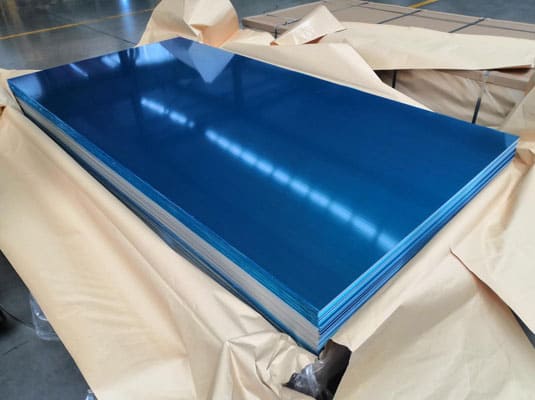
6061 alloy 4×8 aluminum sheet
The size of 6061 aluminum sheet has a certain impact on its performance. First of all, the length and width can affect the load-bearing capacity and stability of aluminum alloy sheets.
Generally speaking, the larger the size of the aluminum alloy sheet, the stronger the load-bearing capacity, and it is suitable for projects and structures with higher requirements.
Secondly, the thickness will affect the strength and deformation resistance of the aluminum alloy sheet. Aluminum alloy sheets with larger thicknesses usually have higher strength and rigidity and are suitable for situations where they can bear larger loads.
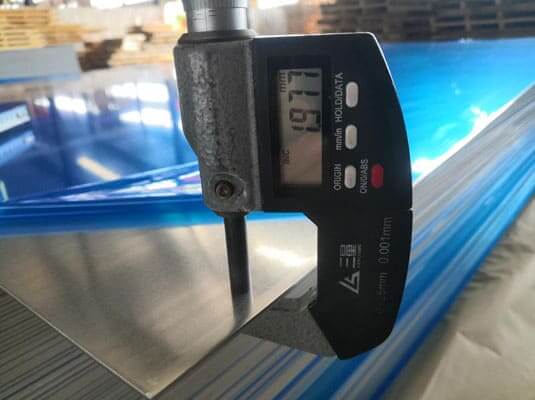
2mm thickness 6061 aluminum sheet
The size of the 6061 aluminum alloy sheet also needs to be selected according to the specific application scenario.
In the aerospace field, due to the high requirements for lightweight materials, common sizes are generally smaller and suitable for manufacturing aircraft parts and spacecraft structures.
In the field of automobile manufacturing, body panels usually require larger sizes to improve the stability and safety of the body.

Auto used 6061 aluminum sheet
In the field of shipbuilding, hull sheets are generally longer to adapt to the curves and shapes of the hull.
In the field of construction, aluminum alloy panels are widely used in curtain walls, ceilings and decorative panels. The size is determined according to the specific architectural design and requirements.
The size of the 6061 aluminum sheet is determined based on actual needs. The appropriate size can be selected based on factors such as application scenarios, load-bearing requirements, and structural requirements.
When selecting the size, factors such as the mechanical properties, corrosion resistance and processing performance of the aluminum alloy sheet need to be considered, combined with specific application requirements. By rationally selecting the size, the excellent properties of 6061 aluminum alloy sheets can be fully utilized and used in more fields.
Typical uses of 6061 aluminum sheet alloy
1. The application of 6061 aluminum sheet and strips is widely used in decoration, packaging, construction, transportation, electronics, aviation, aerospace, weapons and other industries.
2. Aluminum materials for aerospace are used to make aircraft skins, fuselage frames, girders, rotors, propellers, fuel tanks, wall panels and landing gear struts, as well as rocket forged rings, spacecraft wall panels, etc.
3. Aluminum materials for transportation are used for body structural parts of automobiles, subway vehicles, railway buses, high-speed buses, doors and windows, shelves, automobile engine parts, air conditioners, radiators, body panels, wheels and ship materials.
4. Aluminum materials for packaging All-aluminum can-making materials are mainly used as metal packaging materials in the form of sheets and foils to be made into cans, lids, bottles, barrels, and packaging foils. Widely used in packaging of beverages, food, cosmetics, medicines, cigarettes, industrial products, etc.
5. Aluminum materials for printing are mainly used to make PS plates. Aluminum-based PS plates are a new material in the printing industry and are used for automated sheet making and printing.
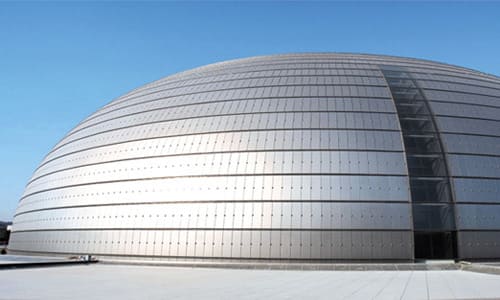 |
 |
 |
|
6. Aluminum materials for building decoration Aluminum alloys are mainly widely used in building frames, doors and windows, ceilings, decorative surfaces, etc. due to their good corrosion resistance, sufficient strength, excellent process performance and welding performance. Such as various building doors and windows, aluminum profiles for curtain walls, aluminum curtain wall panels, profiled panels, pattern panels, color-coated aluminum panels, etc.
7. Aluminum materials for electronic home appliances are mainly used in various busbars, wiring, conductors, electrical components, refrigerators, air conditioners, cables and other fields. Specifications: The representative uses of round rods and square rods include aerospace fixtures, electrical fixtures, and communications fields.
Casting production process and its introduction
The purpose of melting and casting is to produce alloys with satisfactory composition and high purity of melt, so as to create favorable conditions for casting alloys of various shapes.
Melting and casting process steps: batching --- feeding --- melting --- stirring after melting, slag removal --- pre-analysis sampling --- adding alloy to adjust the composition, stirring --- refining --- static Setting——Guide furnace casting.
Hot rolling production process and its introduction
- 1. Hot rolling generally refers to rolling above the metal recrystallization temperature;
- 2. During the hot rolling process, the metal has both hardening and softening processes. Due to the influence of deformation speed, as long as the recovery and recrystallization process is too late, there will be a certain work hardening;
- 3. The recrystallization of the metal after hot rolling is incomplete, that is, the coexistence of recrystallized structure and deformed structure;
- 4. Hot rolling can improve the processing performance of metals and alloys, reduce or eliminate casting defects.
- 1. The casting and rolling temperature is generally between 680°C and 700°C. The lower the better, the stable casting and rolling line usually stops once a month or more to re-stand. During the production process, it is necessary to strictly control the liquid level of the front tank to prevent low liquid level;
- 2. Lubrication uses C powder with incomplete combustion of gas for lubrication, which is also one of the reasons for the dirty surface of casting and rolling materials;
- 3. The production speed is generally between 1.5m/min-2.5m/min;
- 4. The surface quality of products produced by casting and rolling is generally relatively low, and generally cannot meet products with special physical and chemical performance requirements.
- 1. Cold rolling refers to the rolling production method below the recrystallization temperature;
- 2. There will be no dynamic recrystallization during the rolling process, and the temperature will rise to the recovery temperature at most, and the cold rolling will appear in a work hardening state, and the work hardening rate will be large;
- 3. The cold-rolled sheet and strip have high dimensional accuracy, good surface quality, uniform structure and performance, and products in various states can be obtained with heat treatment;
- 4. Cold rolling can roll out thin strips, but at the same time, it has the disadvantages of high energy consumption for deformation and many processing passes.
- 1. Finishing is a processing method to make the cold-rolled sheet meet the customer's requirements, or to facilitate the subsequent processing of the product;
- 2. The finishing equipment can correct the defects produced in the hot rolling and cold rolling production process, such as cracked edge, oily, poor plate shape, residual stress, etc. It needs to ensure that no other defects are brought into the production process;
- 3. There are various finishing equipments, mainly including cross-cutting, slitting, stretching and straightening, annealing furnace, slitter, etc.
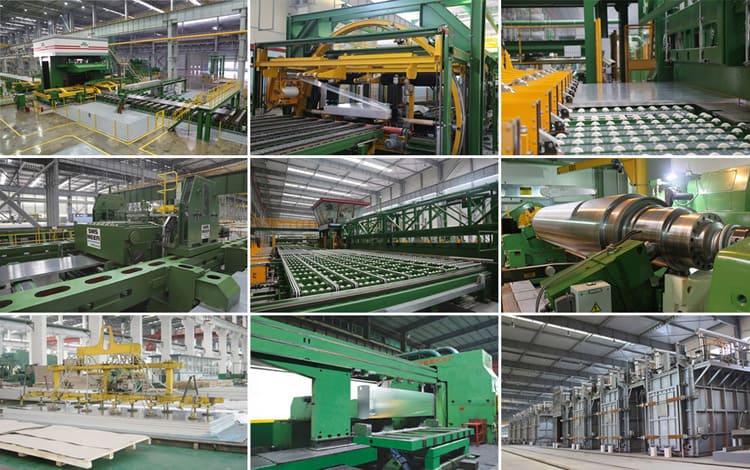
Casting and rolling process
Casting and rolling process: liquid metal, front box (liquid level control), casting and rolling machine (lubrication system, cooling water), shearing machine, coiling machine.
Cold rolling production process

Introduction to finishing production process
Aluminum alloy has the characteristics of low density, good mechanical properties, good processing performance, non-toxic, easy to recycle, excellent electrical conductivity, heat transfer and corrosion resistance, so it has a wide range of applications.
Aerospace: used to make aircraft skins, fuselage frames, girders, rotors, propellers, fuel tanks, wall panels and landing gear struts, as well as rocket forging rings, spacecraft wall panels, etc.
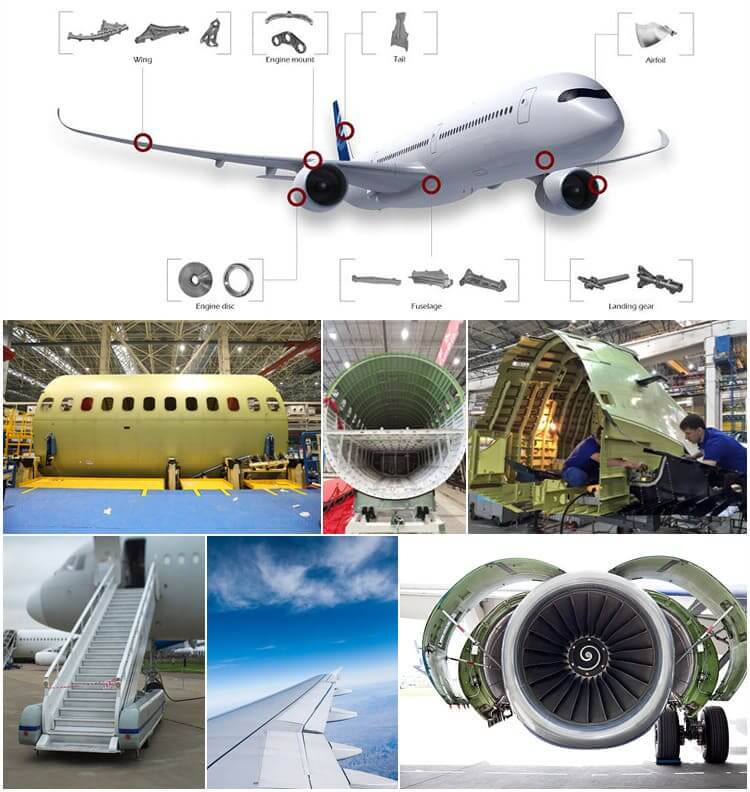
Aluminum alloy used for aerospace
Transportation: used for car body structure materials of automobiles, subway vehicles, railway passenger cars, high-speed passenger cars, doors and windows, shelves, automotive engine parts, air conditioners, radiators, body panels, wheels and ship materials.

Traffic application
Packaging: All-aluminum pop cans are mainly used as metal packaging materials in the form of thin plates and foils, and are made into cans, lids, bottles, barrels, and packaging foils. Widely used in the packaging of beverages, food, cosmetics, medicines, cigarettes, industrial products, medicines, etc.
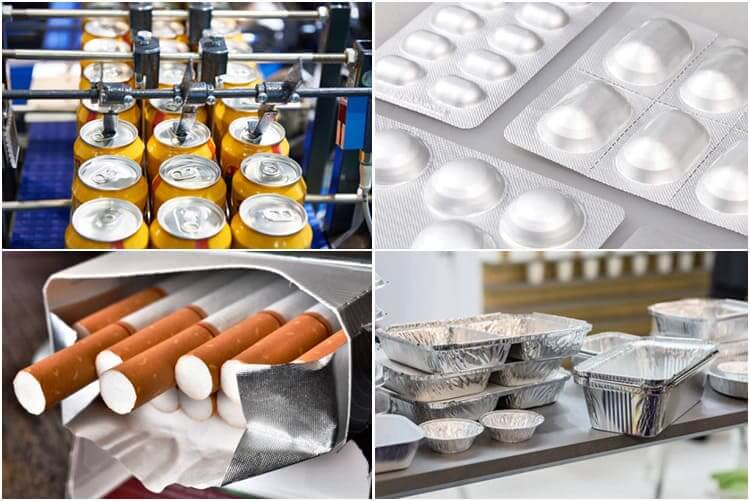
Packaging application
Printing: Mainly used to make PS plates, aluminum-based PS plates are a new type of material in the printing industry, used for automatic plate making and printing.

PS printing
Architectural decoration: aluminum alloy is widely used in building structures, doors and windows, suspended ceilings, decorative surfaces, etc. due to its good corrosion resistance, sufficient strength, excellent process performance and welding performance.
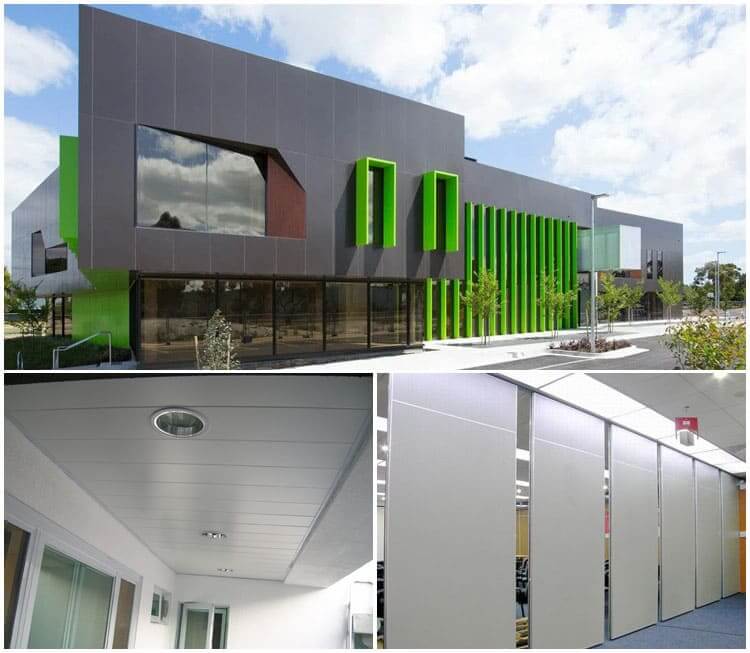
Aluminum alloy construction application
Electronic products: computers, mobile phones, refrigerator shells, radiators, etc.

Electronic product application
Kitchen supplies: aluminum pots, aluminum basins, rice cooker liners, household aluminum foil, etc.

Kitchen application
Packaging Of Aluminum Sheet/Coil
Every detail of packaging is where we pursue perfect service. Our packaging process as a whole is as follows:
Lamination: clear film, blue film, micro-mucosal, high-mucosal, laser cutting film (2 brands, Novacell and Polyphem);
Protection: paper corner protectors, anti-pressure pads;
drying: desiccant;
Tray: fumigated harmless wooden tray, reusable iron tray;
Packing: Tic-tac-toe steel belt, or PVC packing belt;
Material Quality: Completely free from defects such as white rust, oil spots, rolling marks, edge damage, bends, dents, holes, break lines, scratches, etc., no coil set.
Port: Qingdao or other ports in China.
Lead time: 15-45 days.

Aluminum sheet/plate packaging process
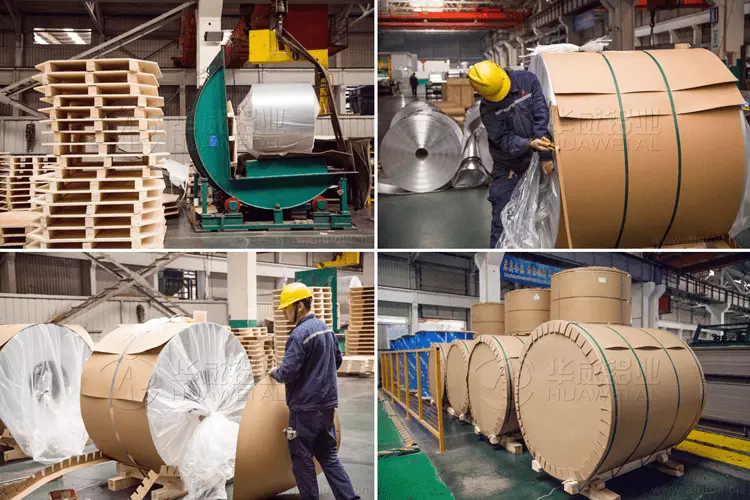
Aluminum coil packaging process
F: Are you a manufacturer or a trader?
Q: We are a manufacturer, our factory is at No.3 Weier Road, Industrial Zone, Gongyi, Henan, China.
F: What is the MOQ for ordering the product?
Q: Our MOQ is 5 tons, and some special products will have a minimum order quantity of 1 or 2 tons.
F: How long is your lead time?
Q: Generally our lead time is about 30 days.
F: Do your products have quality assurance?
Q: Yes, if there is a quality problem with our products, we will compensate the customer until they are satisfied.
Related Products
Latest Blogs
6061 vs 7075 aluminum
"6061" and "7075" are two common aluminum alloy grades, which are widely used in many industrial fields, especially in aviation, aerospace, transportation and structural manufacturing.
Aluminum Foil Used in Air Fryers
Aluminum foil is widely used in daily life, mainly due to its light weight, good ductility, moderate price, and excellent heat conduction and light-shielding properties.
Reasons why the surface of honeycomb aluminum foil cannot be bonded with the adhesive
Aluminum honeycomb panels have good performance in use. They have good strength and good impact resistance. They can be well designed in use. Therefore, they are widely used at present.
Introduction hardness of 1000-8000 series aluminum alloys
1000-8000 series basically covers all aluminum alloy series products. Different series of products have different performance and hardness.






